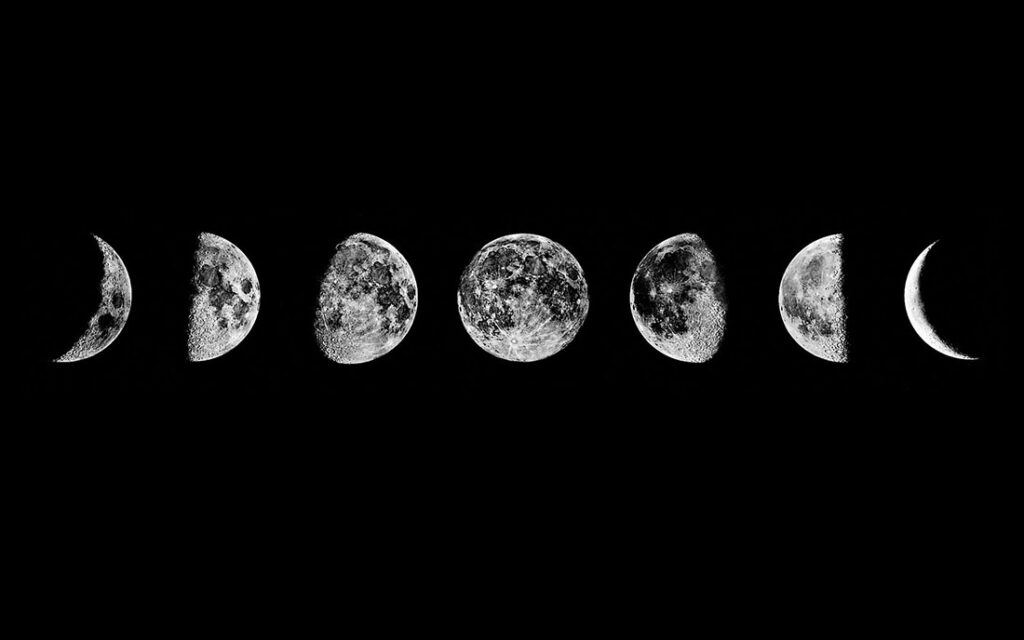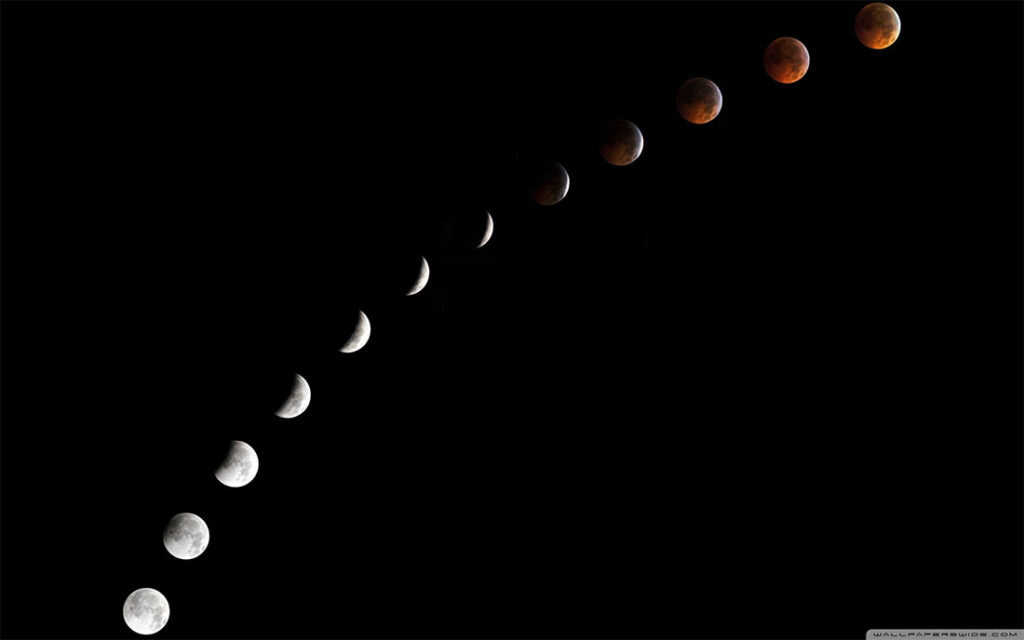When you go outside on a clear night you may see no moon, slivers of the moon or a full moon. You may even see certain phases of the moon during the day. There are eight phases of the moon. They are a result of the moon orbiting the earth. The phase depends on the part of the moon that is lit up by the sun. Here are the names and definitions of the phases:

● New Moon: You won’t see the new moon because the dark side is facing us.
● Waxing Crescent Moon: A thin sliver begins to show. Waxing means increasing. Each night you will see more of the moon.
● First Quarter Moon: Since the new moon the earth has traveled a quarter of the way around the earth. We see half the moon and it rises at noon.
● Waxing Gibbous Moon: As the look of the moon grows (waxing), it forms a “hump”. Gibbous is Latin for hump.
● Full Moon: Half of the moon is visible.

● Waning Gibbous Moon Waning: is the decreasing “hump” of the moon.
● Last Quarter Moon: You will need to stay up late to see this moon. It doesn’t rise till midnight. The moon has now traveled three quarters around the earth.
● Waning Crescent: The moon seems to grow smaller every day. Till the sliver disappears and the moon repeats its earth’s orbit. A complete rotation through the phases take 29.5 days. Take a look at the moon and determine what phase it is in. Notice that different phases rise and set at different times over the course of the day. Maybe you would like to photograph or “the Littles” draw it several times over the next month. This is a good opportunity to further a discussion on how the planets orbit around the sun.
If you are looking for us, you will find us outside observing the moon’s phases.


